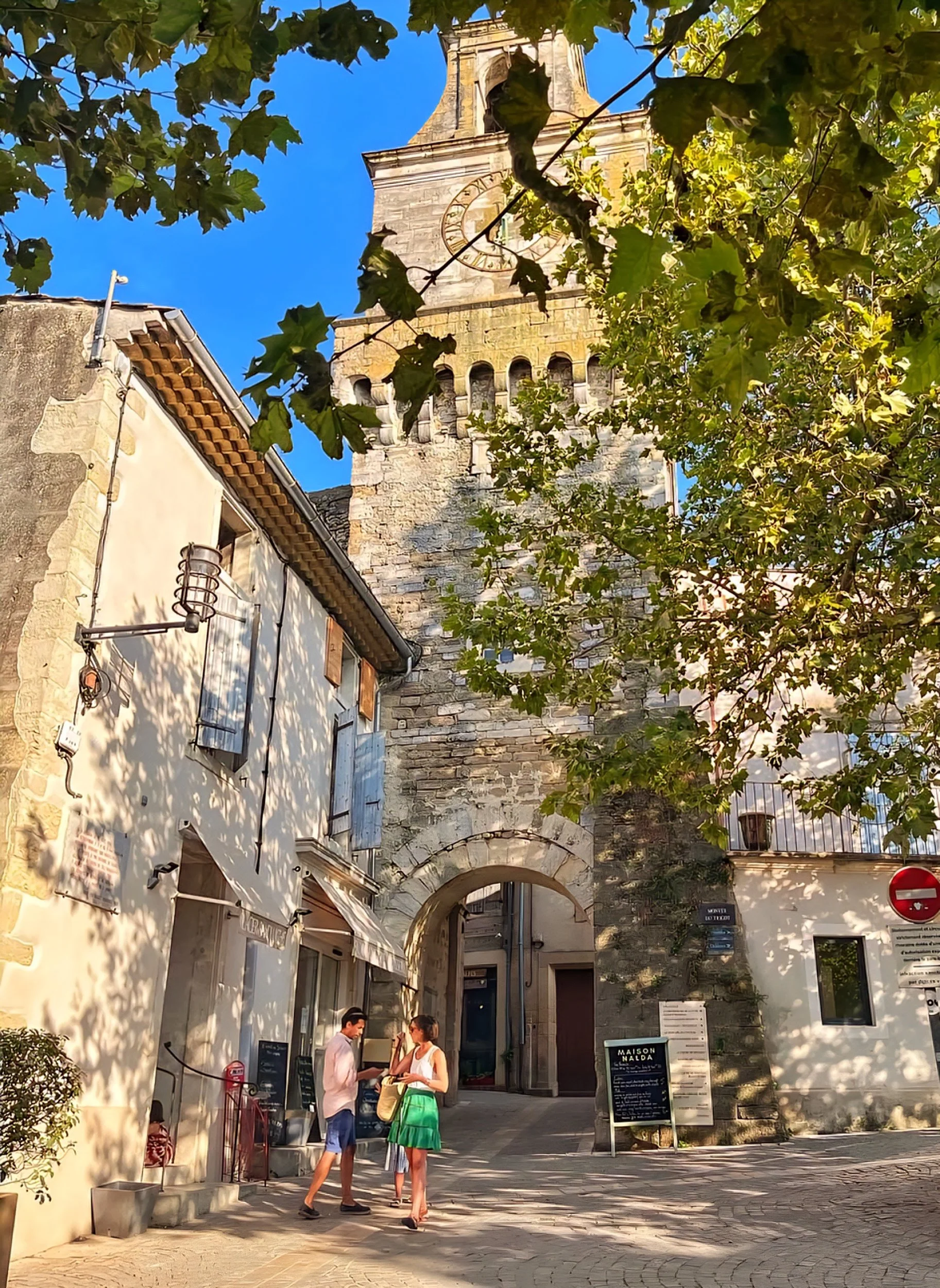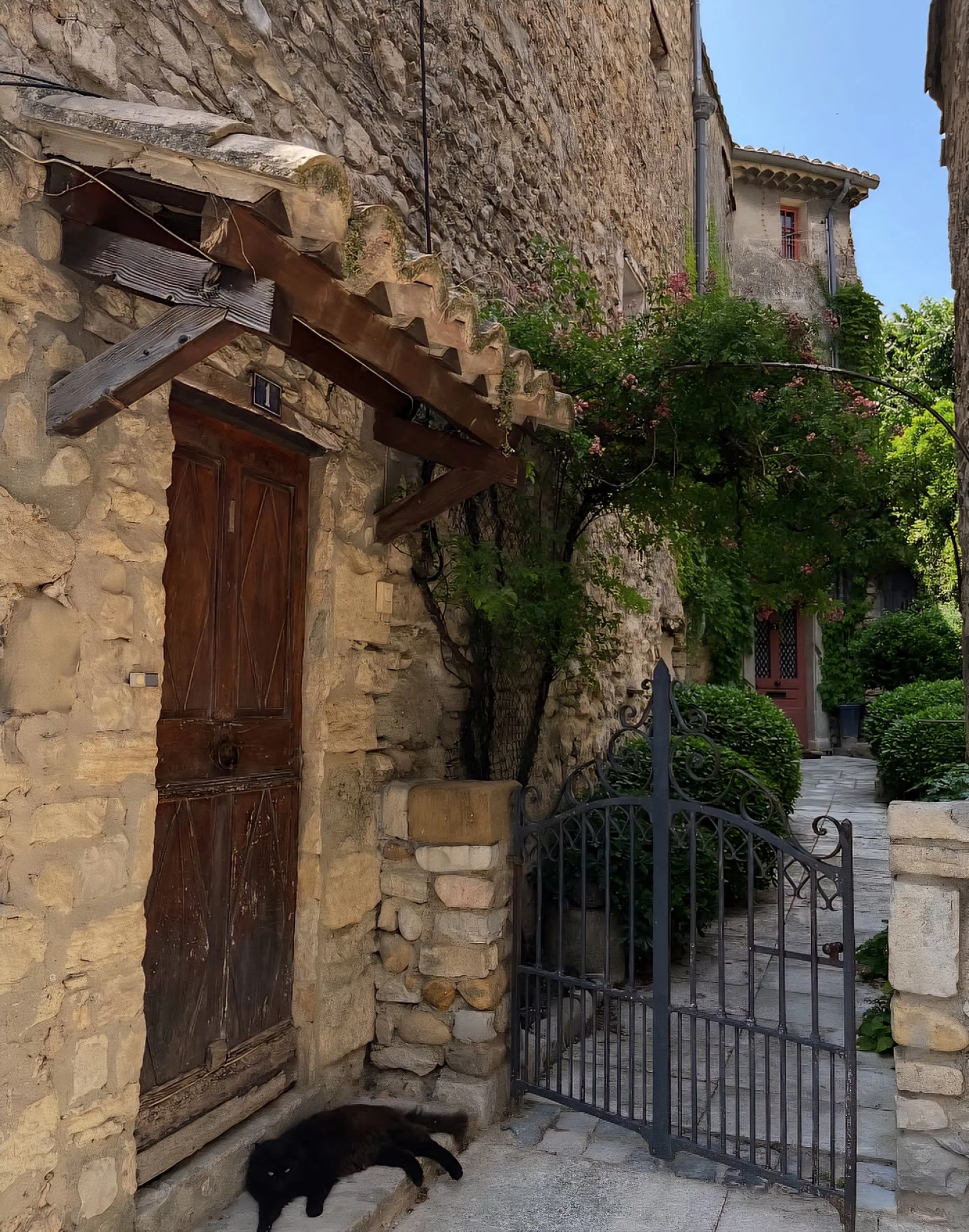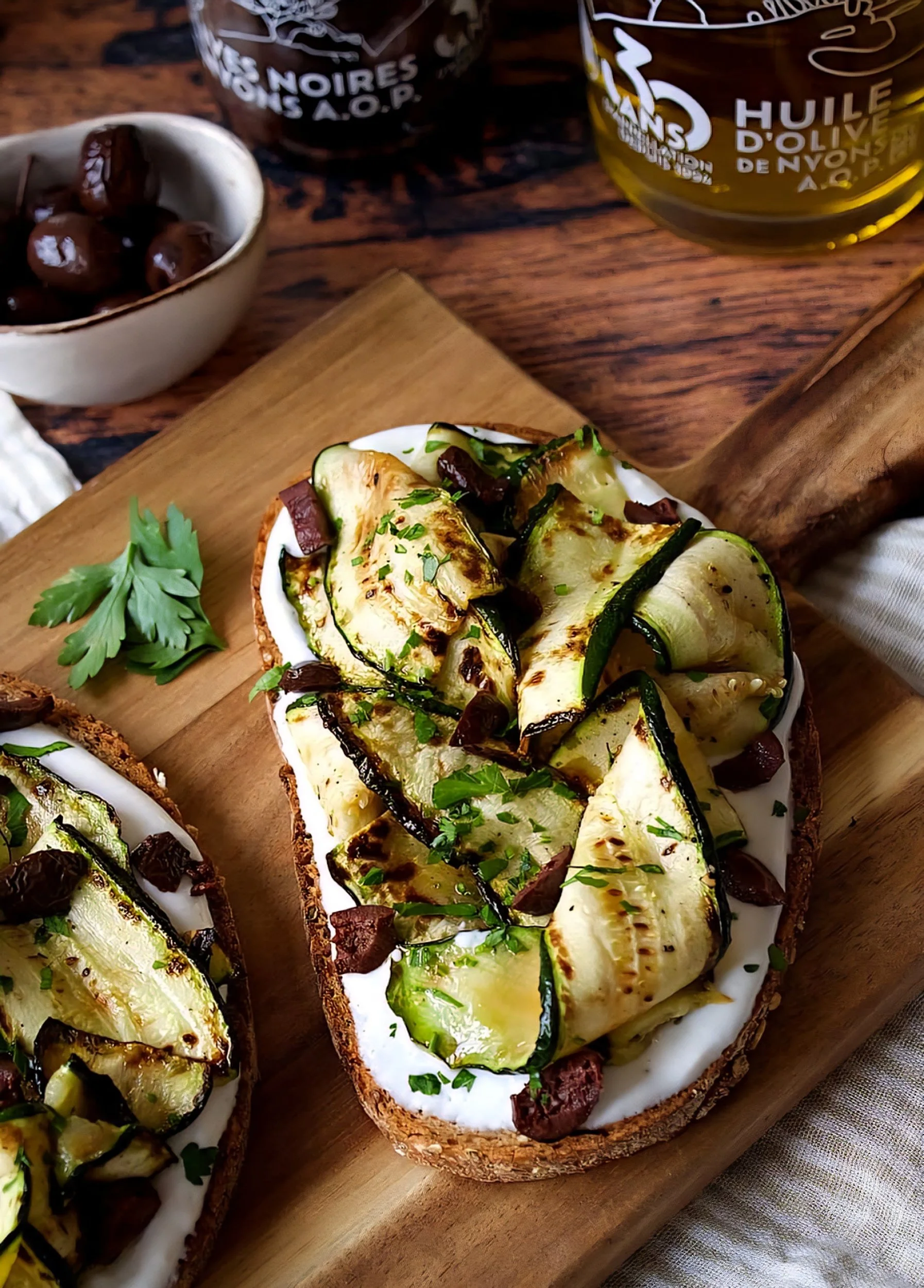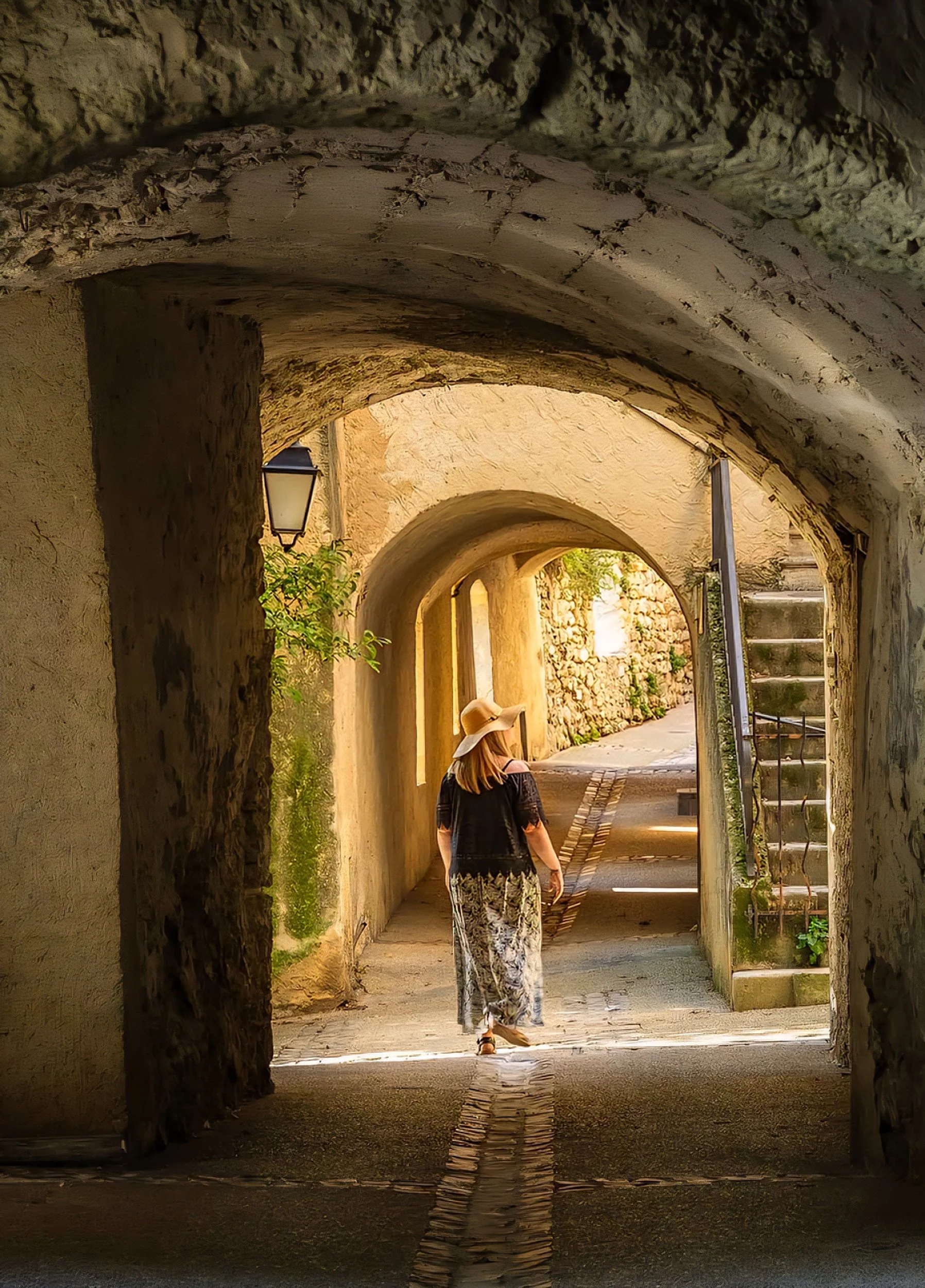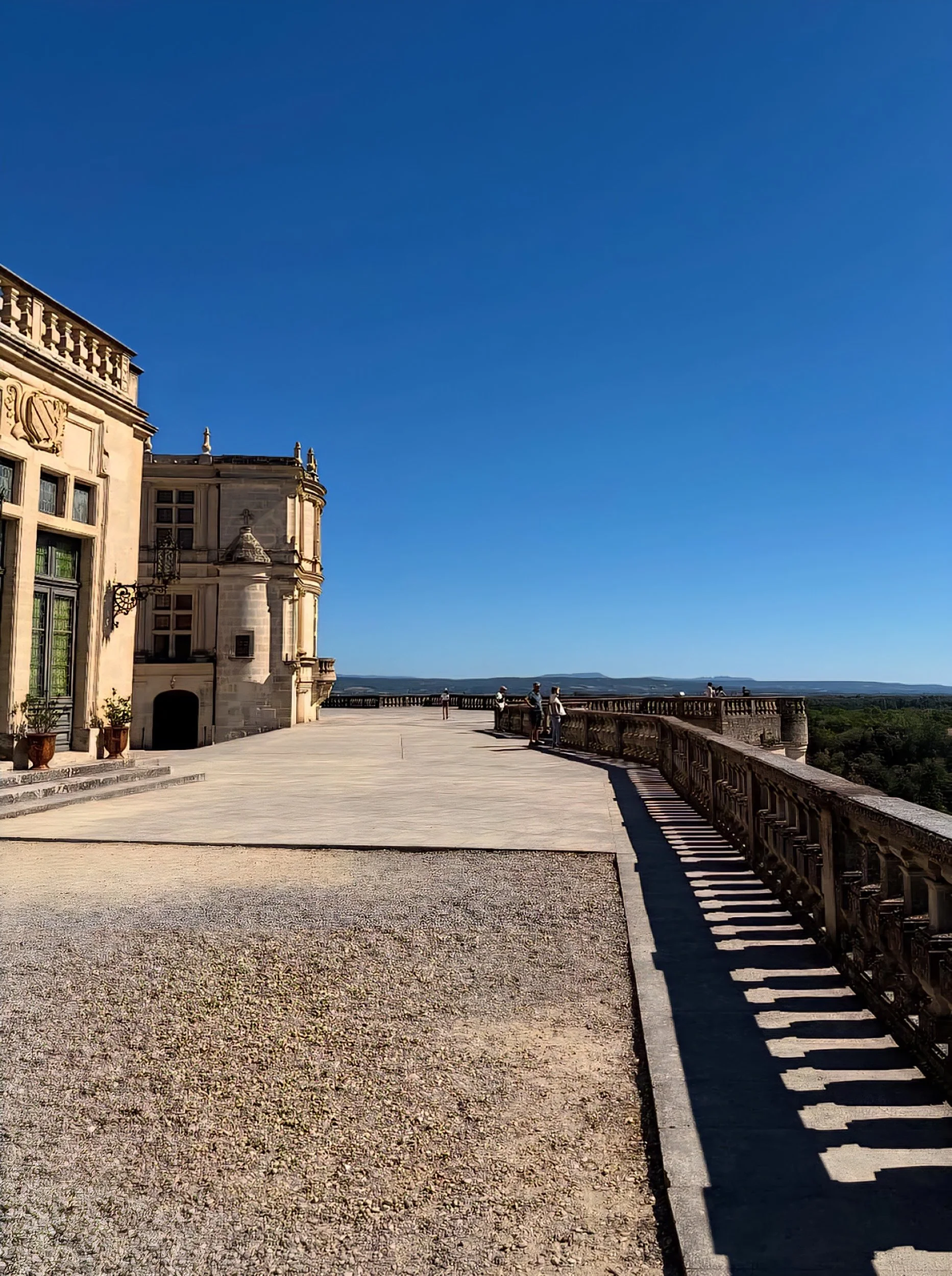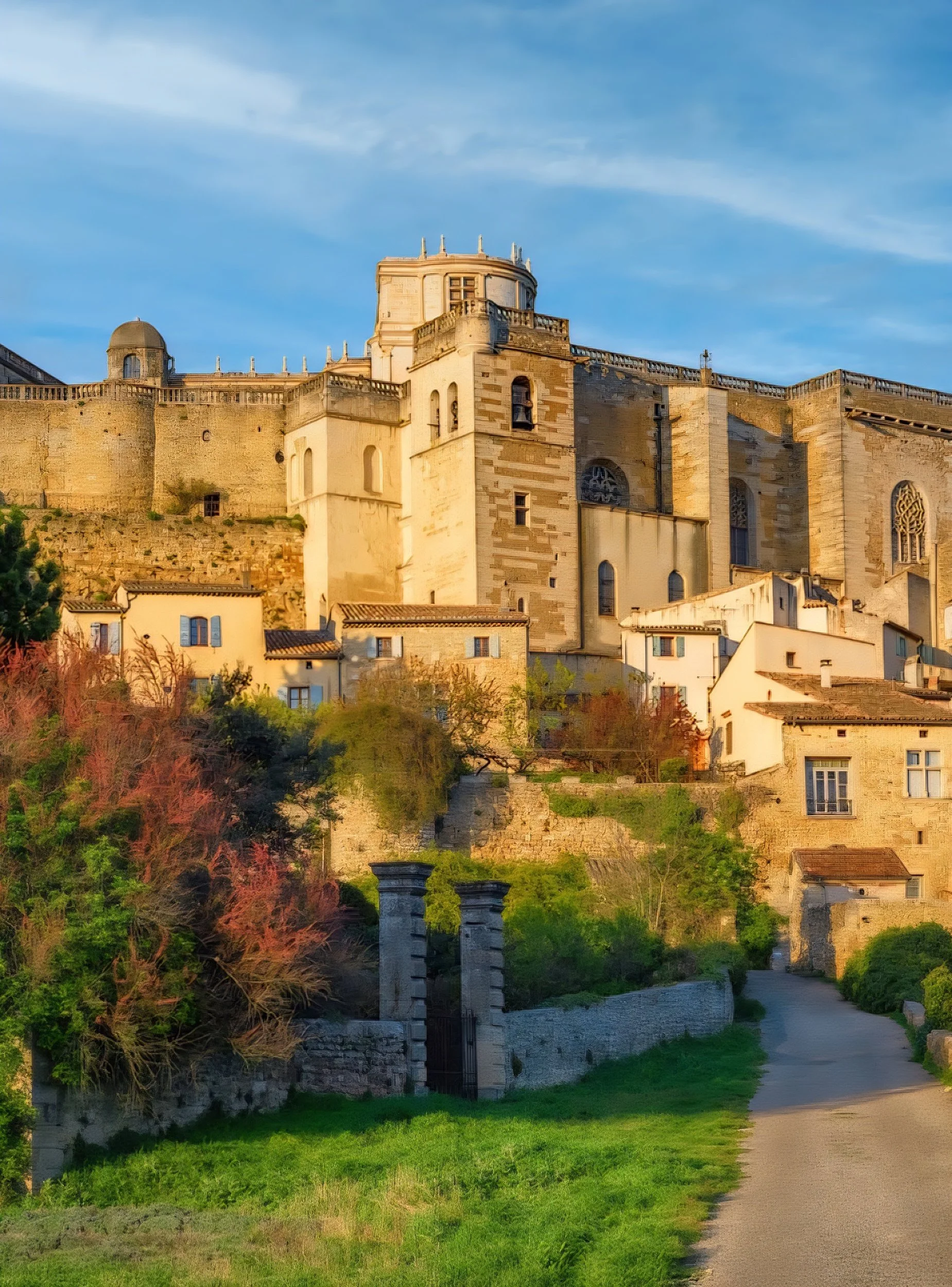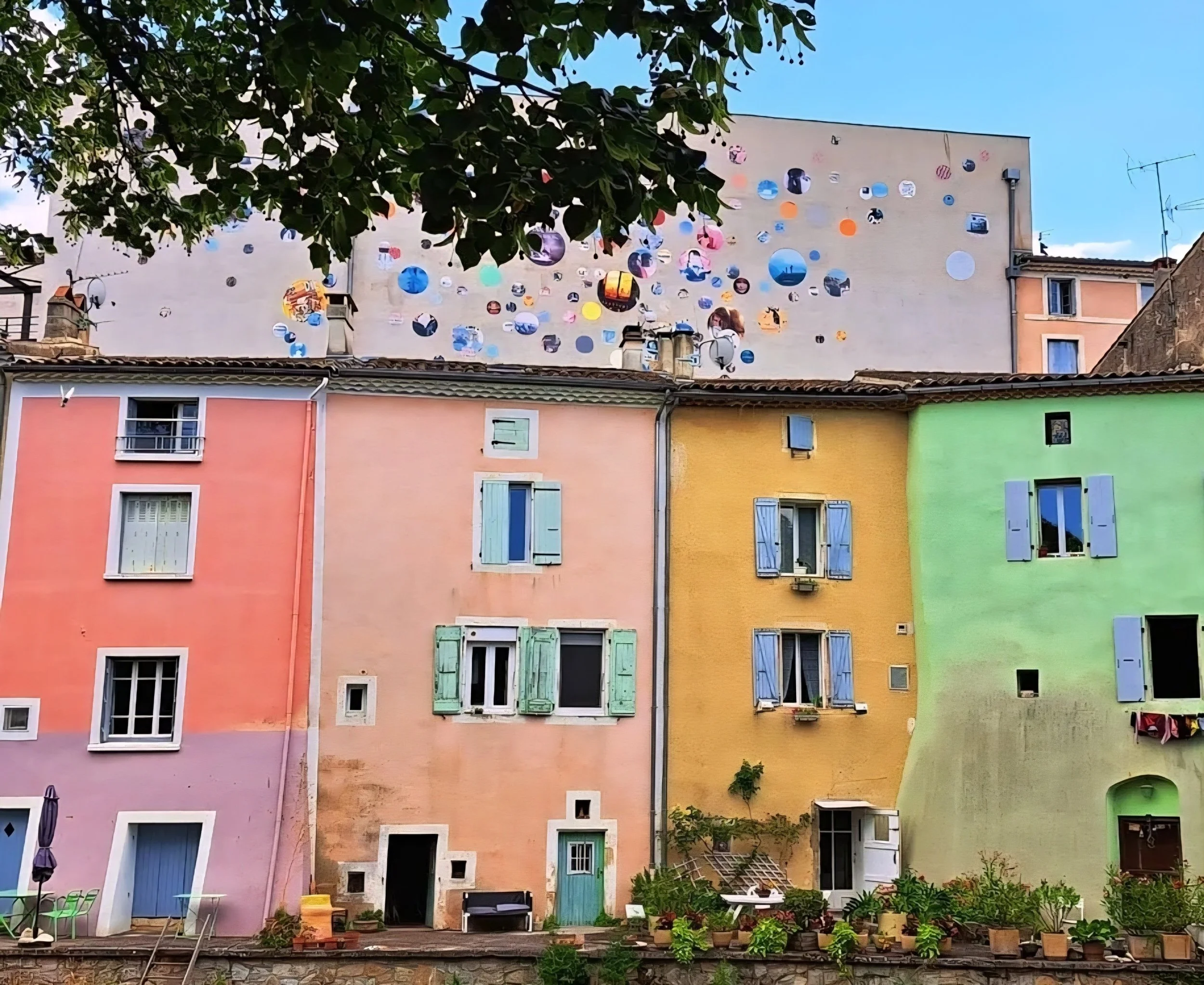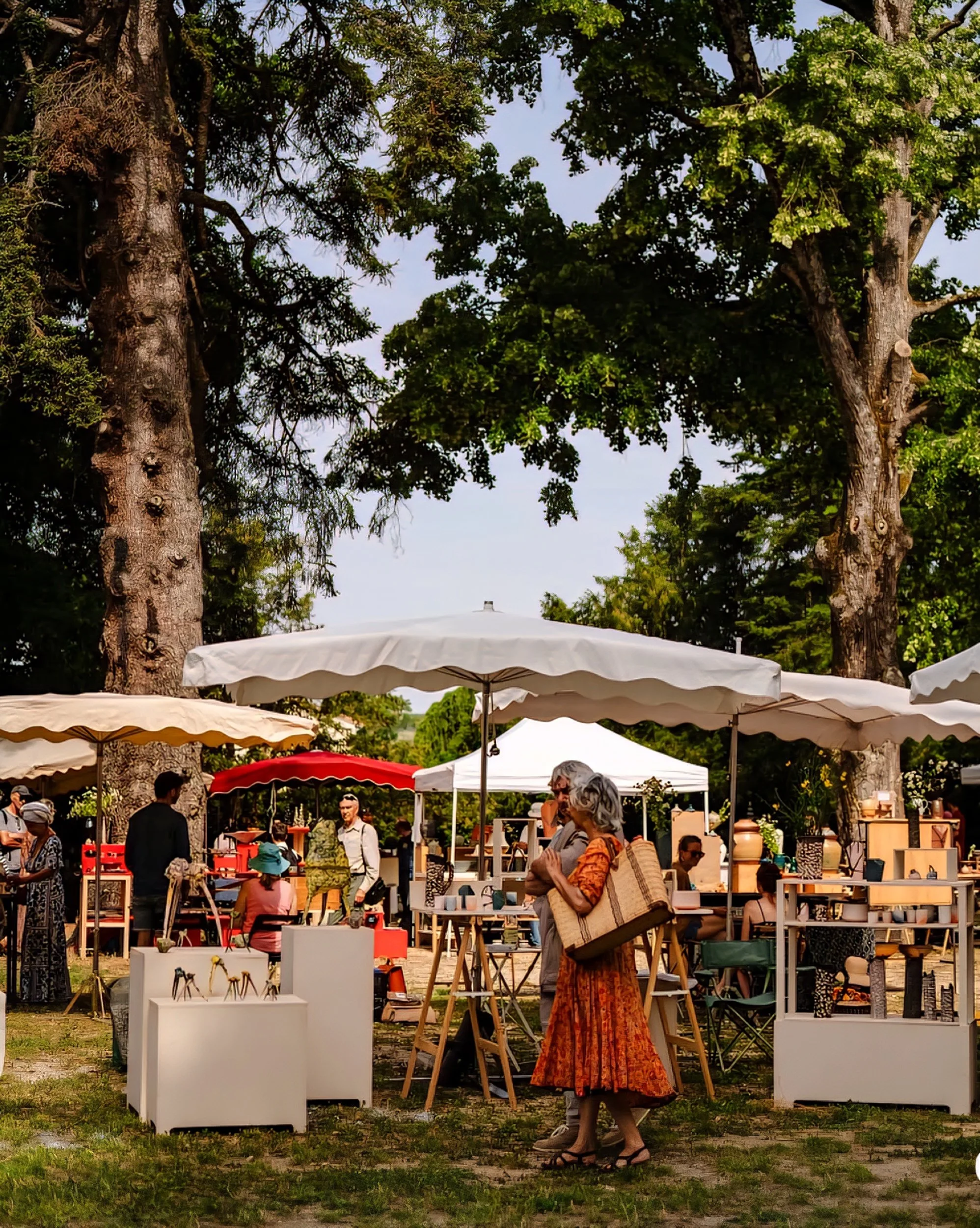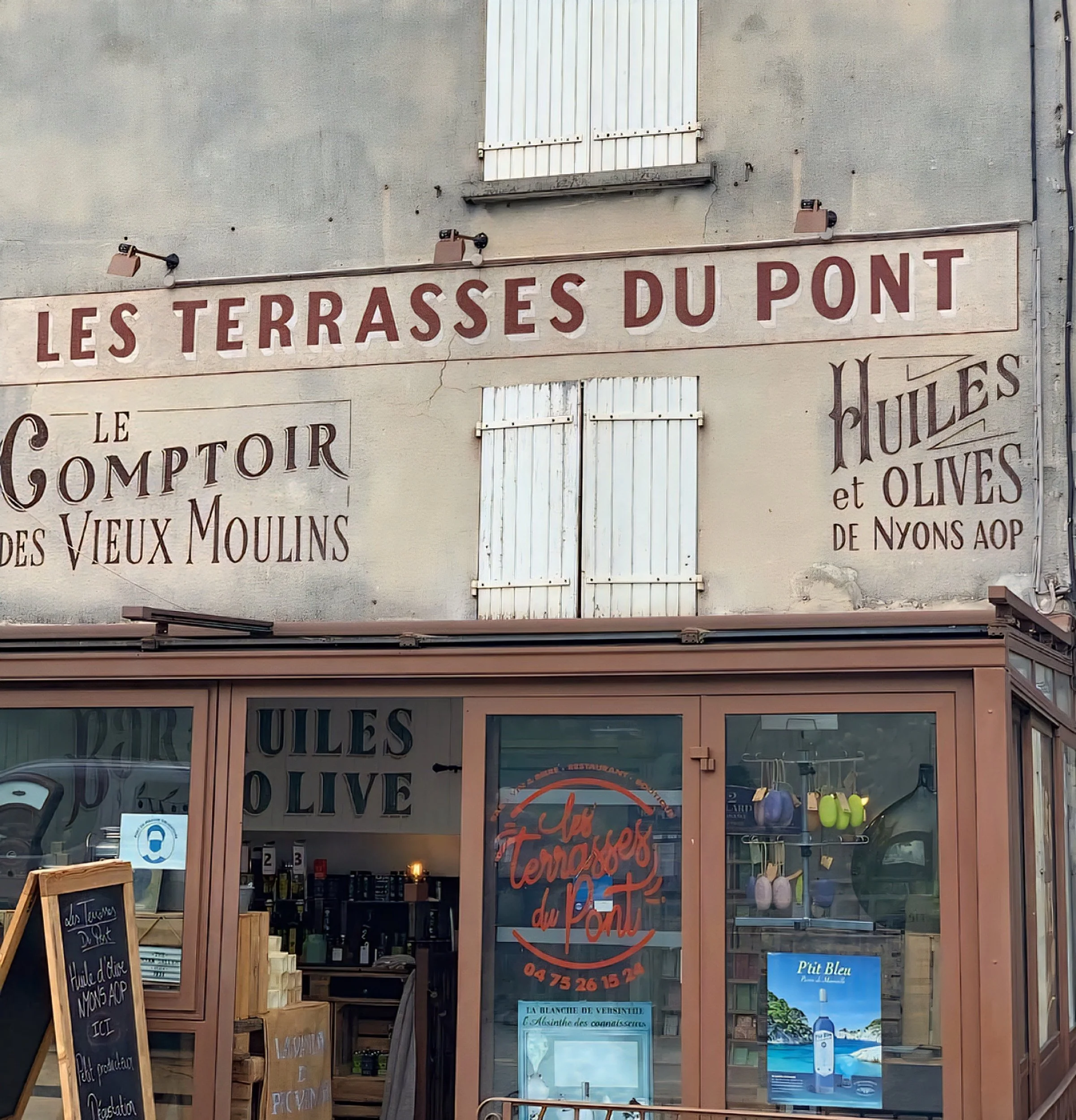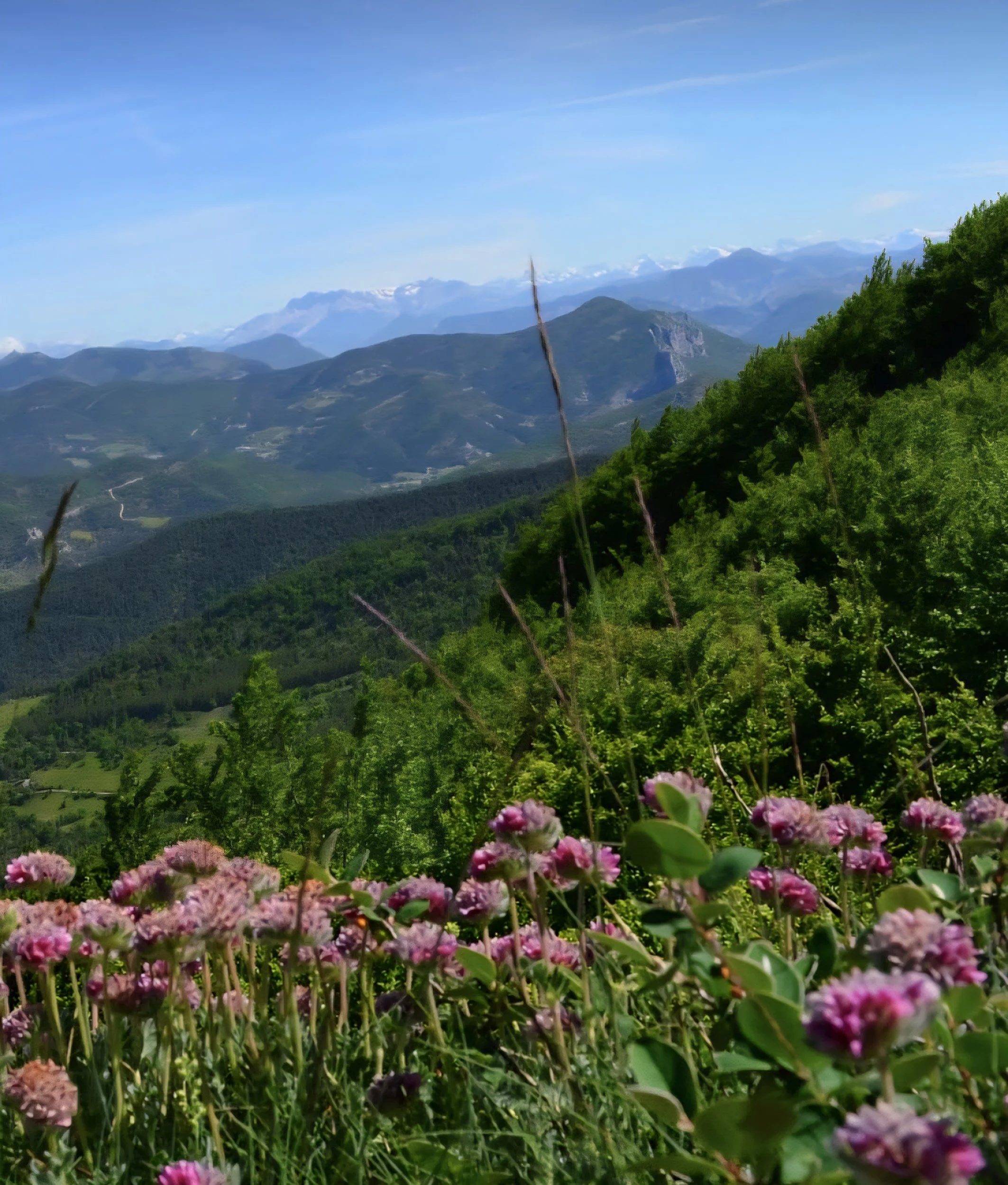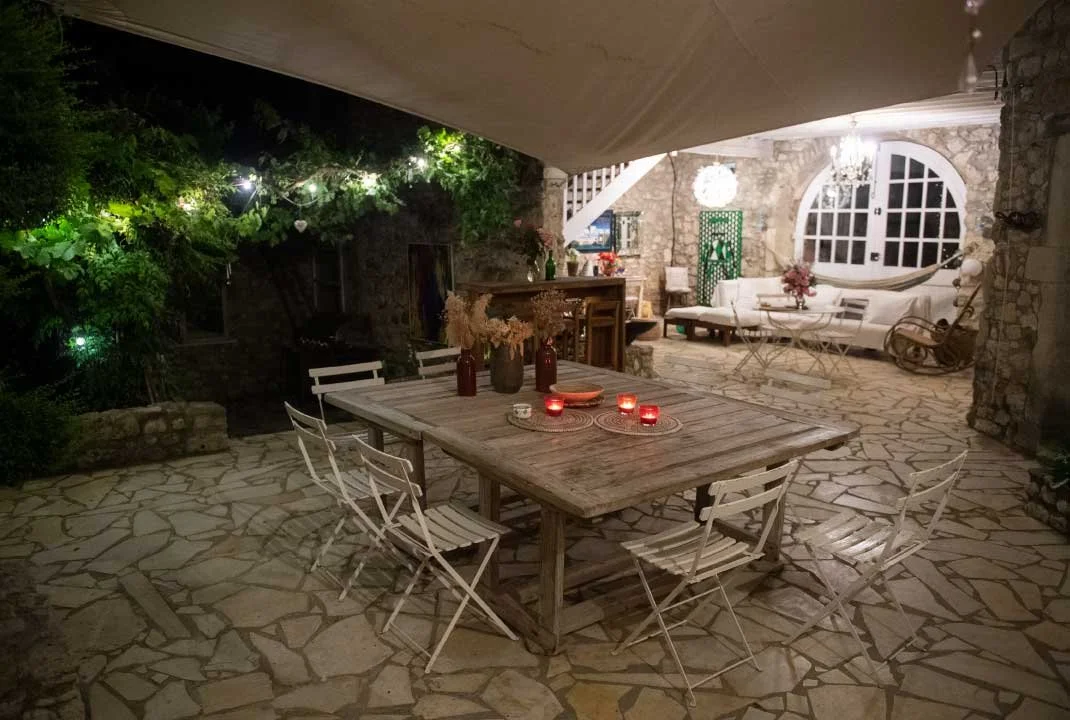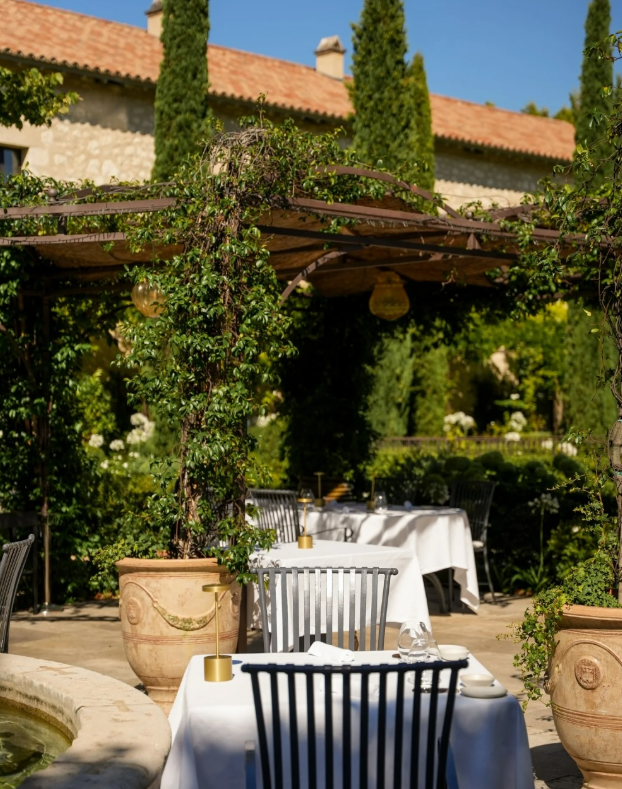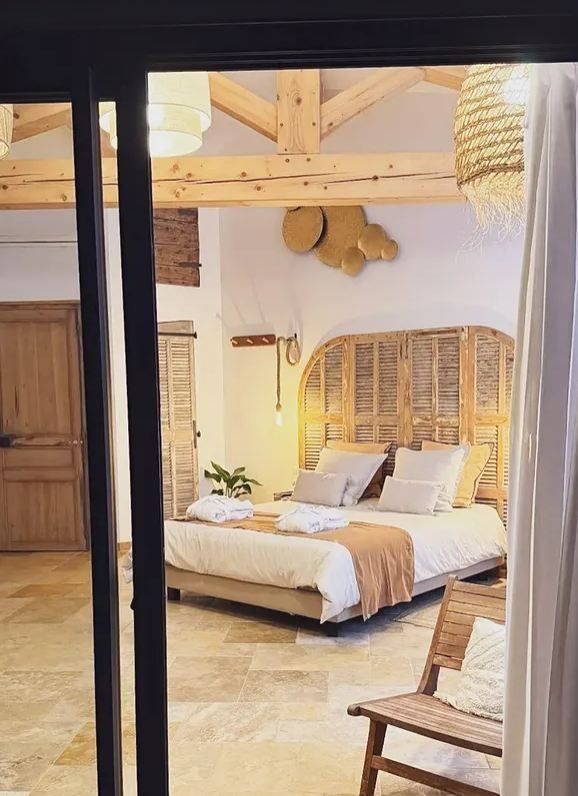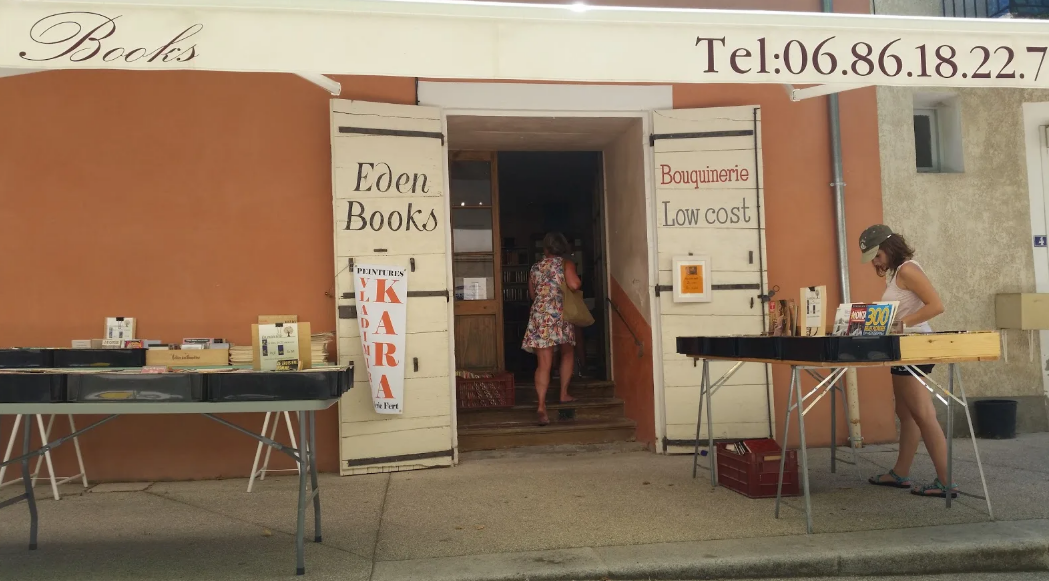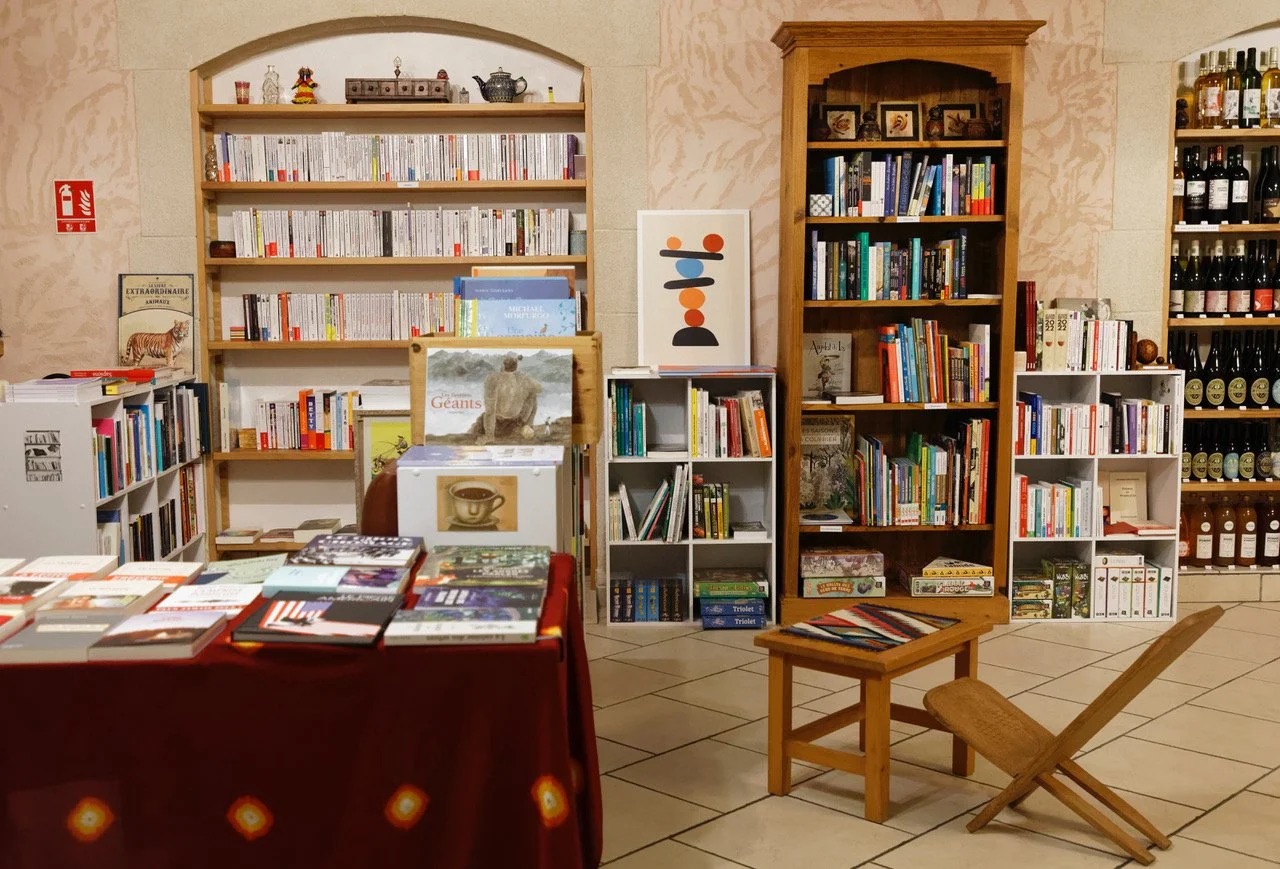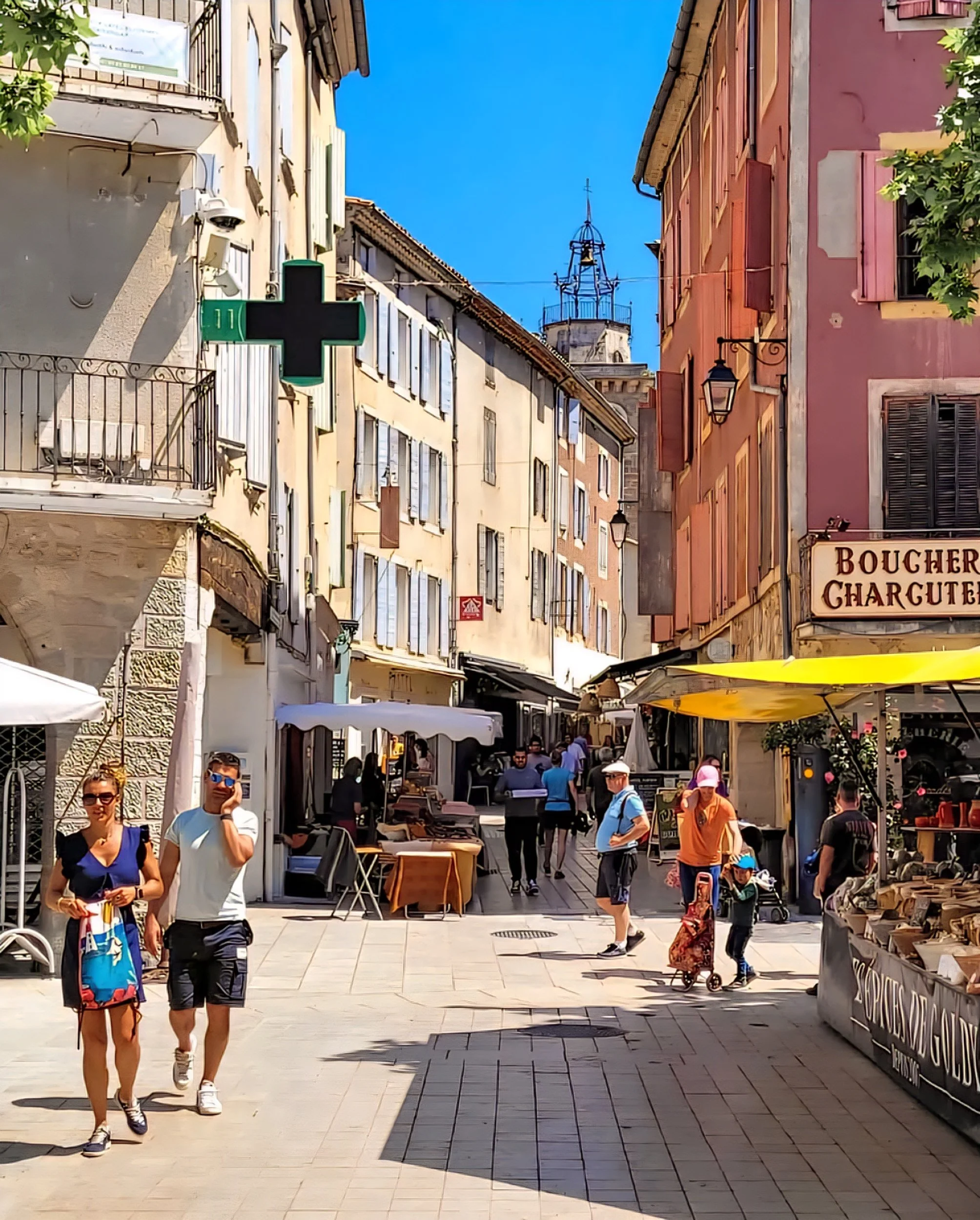Cottages, Vineyards & Forest Walks: A Guide to Drôme Provençale in Autumn
Provence can be noisy… not just in the literal sense, but in how people talk about it. There’s a certain script: lavender season, hilltop villages, rosé by the pool. And while there’s nothing wrong with any of that, it doesn’t leave much space for travellers who prefer things a little quieter, a little slower, and a lot less crowded.
Drôme Provençale is the part of Provence that usually gets left out of that script.
It’s tucked into the southern part of the Drôme department, just north of Vaucluse. Technically, it belongs to the Auvergne-Rhône-Alpes region (not Provence-Alpes-Côte d’Azur) but ask anyone who’s spent time here, and they’ll tell you: this feels like Provence. The landscape shifts from lavender to vines to forest. The pace of life is measured. The food is seasonal and deeply regional. It’s the kind of place where villages still have one bakery, not three gelato shops.
And what it doesn’t have is just as important: no big chain restaurants, no resorts, no big drawcard that brings in crowds. That might sound underwhelming to some. But if you’re the kind of person who travels to be somewhere rather than do everything, it’s a gift.
October, in particular, suits this region well.
You’re just past the crush of summer. The wine harvest is mostly finished. The olive mills are about to start up. The markets are still happening, but they’re slower, and mostly full of locals again. The landscape shifts into its post-harvest colours: ochre vines, dry earth, the odd puff of smoke from someone burning off pruning piles. The heat eases off, the air clears, and the walking trails dry out after summer storms. It’s not dramatic. It’s just quietly, completely pleasant.
Restaurants that shut in winter are still open. Guesthouses often have space, and the owners have time to chat. You can stop by a vineyard unannounced and not feel awkward. You can walk an hour and only pass a few locals, maybe someone gathering chestnuts. You can eat lunch outside on a good day, or by a fire if the weather turns.
In short: it’s a good time to travel here if you value breathing space, french vibes, and not needing to plan your whole trip around avoiding crowds.
This French region works especially well for:
People travelling solo who want time to think, read, walk, and be left alone (in a good way!)
Couples looking for a quieter, cozier kind of break
Travellers who’ve already done the “main” Provence and are curious what’s beyond the postcards
Anyone who wants to visit a real village where people still live year-round
This guide will help you spend a few slow, grounded days in Drôme Provençale in autumn (knowing where to go, where to stay, how to get there, and what to do once you arrive…)
Where Exactly Is Drôme Provençale?
So, if you look at a map, Drôme Provençale sits right at the northern edge of what people think of as Provence - even though, technically, it’s part of the Auvergne-Rhône-Alpes region, not Provence-Alpes-Côte d’Azur. But honestly, it feels like Provence in every way that matters: the food, the light, the landscape, the nature and life.
It’s the southern slice of the Drôme department, stretching roughly from Montélimar in the west to the Baronnies mountains in the east, and bordering Vaucluse to the south. You’re not far from famous towns like Orange and Avignon, but you’re also just far enough to skip the typical Provençal packaging.
The geography is a bit of a patchwork, which is part of what makes it interesting. You’ve got rolling vineyards and olive groves in the west (especially around Nyons and Venterol), medieval villages perched on hills, oak and chestnut forests once you head east, and then the limestone ridges of the Baronnies Provençales if you keep going towards Buis-les-Baronnies and the foothills of the Alps.
This mix of lowland and pre-Alpine terrain makes it great for walking, even in late autumn. It’s the kind of place where you can go from sipping wine in a sun-warmed courtyard to hiking up a forest trail all within a few hours.
And while it’s undeniably scenic, it doesn’t feel curated. You’ll pass a crumbling barn, then a perfect stone house. You’ll see grapevines turning amber next to fields of grazing goats. It’s not staged for tourism. People actually live here year-round, which is probably why it feels more grounded than a lot of more famous spots in Provence.
You don’t need to “know” Provence to enjoy Drôme Provençale. In fact, it might be better if you don’t… because this place has its own thing going on.
Places to visit in Drôme Provençale
Here’s something most people get wrong when they first look at this region: they assume it’s all the same. A scattering of villages, some vineyards, and that’s it. But Drôme Provençale has a lot of variety depending on where you stay - and in autumn, the difference between “quiet” and “completely shut” matters.
So instead of listing pretty places for the sake of it, here’s what’s actually useful when picking a base. Especially if you’re travelling in October or early November.
Nyons: Autumn Markets, Olive Groves, and Everyday French Life
If you're heading to Drôme Provençale in late October or November and want to stay somewhere that actually feels alive (not half-closed for the season) Nyons is one of your best bets.
It’s not a village that exists just for tourists. People live here full-time. The bakeries open early (and not just on weekends), there are cafés where locals sit with a newspaper and not just a phone, and if you forget something basic, there’s a proper supermarket, not a tourist mini-mart. These things might sound small, but when you're travelling in the off-season, they really make a difference.
The town itself is set in a little bowl surrounded by hills and olive groves. It’s known across France for its AOP black olives and olive oil, and autumn is actually a great time to be here if you’re curious about that side of things. The harvest kicks off around November, and even if you're a bit early, you’ll start seeing crates stacked up at the mill, or workers pruning and prepping the groves. You can visit the Scourtinerie (a working factory that still makes traditional olive-pressing mats), or pop into one of the local oil cooperatives for a tasting! They’re open year-round.
There’s a proper market every Thursday (and a smaller one on Sundays), and it’s not just crafts and lavender sachets. You’ll see real shopping happening: people buying vegetables, cheese, eggs, soap, chestnuts. It's low-key, but lively. And because Nyons is a little bigger than most villages in the area, you’ve got more options if the weather turns… how about a local cinema, bookshops, indoor cafés, and even a small covered food market?
A few guesthouses stay open year-round, and you’ll also find apartments to rent if you want to self-cater. The rhythm here is more “I live here” than “I’m on holiday,” which can be a relief if you’re tired of chasing the next Instagram village. Nyons lets you slow down without going stir-crazy.
It’s also one of the more public transport-friendly bases in the area. You can get here by bus from Montélimar or Valence (though you’ll want to double-check autumn schedules), and if you plan to stay put for a few days with just a few day trips, it works. No need to drive every time you want a baguette or a coffee.
If you’re someone who prefers to live in a place for a bit, rather than tick off a list, Nyons is a good match. It’s not dramatic, and it won’t show up in many trendy “Provence” roundups, but it’s steady, friendly, and gives you room to settle in.
Grignan: For a Slower, Quieter Village Stay
If Nyons feels like “everyday life with a Provençal accent,” then Grignan is where things slow down a bit - in a good way. This is the place you come to when you want the vibes of a small village, but still need a few cafés and walking routes to structure your day.
Grignan sits slightly higher up, surrounded by rolling vineyards and fields that shift colour with the season. In summer, it’s best known for lavender (the famous purple fields bloom nearby in July) but autumn brings something calmer. The vines go golden, the air cools off just enough to make morning walks feel like a proper ritual, and the village itself becomes quieter once the summer crowds disappear.
The town is built around its 16th-century château, which still dominates the skyline and adds just enough of a “wow” factor without turning the place into a theme park. In fact, one of the nicest things to do here (especially in autumn) is just wander. The old stone streets are steep and winding, but not too hard on the legs, and you can go from shady alleyways to big open views over the countryside in just a few minutes.
There are a handful of independent shops and galleries here that stay open into November - especially on weekends, and they tend to focus more on local artisans than mass-made souvenirs. Think ceramics, linen, small-batch perfume, handmade paper goods. Nothing fancy. Just well-made things by people who live nearby.
Food-wise, there are a few solid restaurants that keep going through autumn, especially for lunch. One worth checking is Le Poème de Grignan, a small spot with a short seasonal menu, just a few steps from the main square. There’s also a wine bar tucked behind the château that often stays open later in the season, which is good for an early dinner or apéro with a view. It’s not a foodie destination per se, but you won’t go hungry.
Accommodation in Grignan ranges from small guesthouses to a couple of cozy hotels and B&Bs, many of which stay open through October and some into November. A few have fireplaces or outdoor spaces you can actually use this time of year - perfect if you want to read in the afternoon sun or warm up after a walk.
Speaking of walking: autumn is an ideal time to explore the trails around Grignan. The vineyard routes are especially lovely in autumn as the colours are changing, the harvest is mostly done, and the air is cool enough to make even longer loops feel easy. You’ll pass old stone cabanes, tiny chapels, and wide views across the Drôme Provençale countryside. Some trails start right in town, so you don’t need to drive anywhere to stretch your legs.
Grignan doesn’t have public transport as good as Nyons, so you’ll want a car if you stay here. But once you arrive, you probably won’t feel like going far.
It’s not a place with nightlife or “must-sees.” But if you’re craving a few grounded days in a beautiful, lived-in village with autumn light, local wine, and quiet streets, it’s hard to beat.
Venterol: A Small Wine Village That Still Feels Lived-In
Venterol doesn’t make many “must-see” lists, but it’s stunning. It’s just a short drive (about 10 minutes) from Nyons, but the energy shifts the moment you arrive. This isn’t a preserved-for-tourists village. It’s a real, lived-in place with a primary school, a town hall, and neighbours who stop to chat in the street. Especially if you know a few words in French.
There are no coach tours here. No shops selling lavender sachets or postcards. Instead, you’ll find a quiet village centre with one very good boulangerie, a few narrow lanes with shuttered houses, and a backdrop of vineyards and low hills that are especially beautiful in autumn, when the vines turn to rust and gold.
If you’re the kind of traveller who likes to start the day with a walk and a coffee, then see how the day unfolds, this is a place that supports that kind of vibe. You can follow small vineyard paths directly from the village, stop in at the local wine cooperative (Cave La Venteroline) to taste wines from the surrounding slopes, or just stay in and read with the windows open.
There’s a growing group of small-scale winemakers working just outside Venterol, too - with many focused on organic or natural methods. If you’re here during the harvest (late September to early October), you might see activity in the fields or even catch a pressing in action.
What Venterol doesn’t have is a long list of restaurants or cafés… which is either a downside or a perk, depending on how you like to travel. Nyons is close enough for dinner outings or market runs, but once you're back in the village, it’s properly quiet.
Where to stay? Look for chambres d’hôtes or small self-catering houses. La Tulipe Sauvage is one of the more thoughtfully run guesthouses in the area: simple, rustic, and with kind hosts who know the region well. Some rentals include bikes, which are useful for getting around without needing to hop in the car every time.
If you’re looking for a place that still feels French (not curated for visitors) Venterol hits a sweet spot. It’s one of those villages where time moves gently, and no one’s in a hurry. Ideal for a few off-grid days with good wine, warm light, and vineyard walks straight from your door.
Buis-les-Baronnies: Forest Walks, Fresh Air, and a Different Side of Drôme
If Nyons and Venterol are all about vines and olive groves, Buis-les-Baronnies shows you a wilder side of Drôme Provençale. It’s tucked further into the Baronnies mountains, where the landscape shifts with more trees, more altitude, more space to walk without seeing many people. The air feels clearer here, and in autumn, you can actually smell the thyme, pine, and wild herbs as you hike.
This is a proper base for walkers. There are trails in every direction… some long and remote, others short enough to squeeze in before lunch. Late October into November is often ideal walking weather: cool but not cold, with fewer wasps, clearer skies, and hardly any crowds. If you're lucky, you might catch the forested hills glowing in shades of orange and gold, especially on the north-facing slopes.
The town itself is small but real. There’s a weekly market, proper grocery shops, a few year-round cafés, and a general sense that life here doesn’t stop when summer ends. You’ll see cyclists, hikers, and locals going about their routines. It’s not touristy, but you won’t feel like you don’t belong either.
What makes Buis work in autumn is its balance: you can spend the whole day outdoors, then come back for a simple dinner in town or cook something cozy at your guesthouse. No one’s dressing up. And if it rains, there’s enough going on in the village (or enough books in your room) to make it a restful day.
Places like Les Arcades or Auberge d’Aranc offer basic but comfortable rooms with friendly owners who know the trails well. If you're self-catering, some of the gîtes in the hills just outside town give you direct access to walking routes, so you can step outside and start exploring without getting in a car.
Dieulefit: Pottery, Slow Markets, and Low-Key Mountain Vibes
Dieulefit is one of those towns that doesn’t jump out at you on a map - but once you’re there, it sticks. It’s about 30 minutes east of Nyons, backed by low mountains, and known locally for two things: pottery and fresh air. There’s even a saying here: “Dieulefit, ville de bien-être” — city of well-being — which sounds like marketing, but has some truth to it. People have come here for generations to rest, breathe, and reset.
In autumn, the town takes on a quieter rhythm. The Saturday market still runs and is one of the better ones in the area, especially for seasonal produce and local ceramics. You’ll find root vegetables, mushrooms, goat cheese, and stalls selling simple, earthy pottery in glazes that match the landscape. A lot of the makers have their studios nearby, so it’s a good place to buy something useful (not just decorative) and know where it came from.
The town itself is bigger than a village, smaller than a city, which makes it a comfortable base if you want more than one bakery and a few choices for dinner. It’s not fancy, but it’s solid. A few places stay open all year, and guesthouses here tend to be run by people who’ve lived in the region for years (or moved here intentionally to slow down). You don’t feel like a tourist, which is part of the draw.
There are short walks and trails in the hills right behind town - nothing too wild, but perfect if you want to clear your head or stretch your legs before lunch. In late October and November, this whole area smells of leaves, damp stone, and wood smoke. On market mornings, the centre fills up with locals doing their weekly shop, often stopping for a coffee or glass of red before heading home.
One detail that makes Dieulefit stand out: it has a long history as a place of refuge and quiet resistance. During WWII, the town became a safe haven for Jewish families, artists, and displaced people - and the locals protected them. That spirit of quiet care is still part of the place. It’s not a big tourist story, but it gives the town a certain weight you can feel when you’re there.
Things to Do in Drôme Provençale in Autumn
Drôme Provençale isn’t the kind of place where you need a checklist. That’s part of the draw. But if you’re the kind of traveler who still likes to get to know a place through what you do (not just what you look at) there’s plenty to build your days around here. Especially in autumn.
This is a region that doesn’t shut down the moment summer ends. Markets keep going, vineyards are still active, and if you show up at a pottery studio, chances are someone’s still working behind the kiln. The weather makes it easier to explore on foot. Local ingredients shift with the season. And there’s just enough going on that you can be spontaneous without feeling like you’ve missed something.
Here’s our best picks on what to do in Drôme Provençale in autumn - without a busy itinerary.
Walk through the vineyards after harvest
You don’t have to be into wine to enjoy walking through vineyard country. In Drôme Provençale, the vines stretch over the hills around Vinsobres, Visan, and between Venterol and Nyons - and in autumn, they’re some of the most peaceful places to be. After the harvest (usually wrapped up by early October), the vines shift into deep gold and rust. There’s no one around, and the countryside feels quietly open.
These aren’t marked hiking routes… more like low-traffic farm lanes, dirt tracks, and side roads. You can start at a village like Venterol or Rousset-les-Vignes, walk through the vines for an hour or two, and circle back without retracing your steps. You’ll probably pass a few tractors or local walkers, but it’s otherwise still.
If you’re staying in one of the smaller villages, this might end up being your favourite part of the day. No need for a guide, just bring a scarf, wear layers, and don’t forget water.
Visit an olive mill (or buy fresh-pressed oil straight from the co-op)
Nyons is olive country. The town is at the heart of one of France’s only AOP olive oil regions, and it’s famous for two things: its black Tanche olives and its mild, buttery olive oil. Autumn is a great time to visit if you’re curious about how it’s made - the mills typically start pressing in November, but you can still visit co-ops and tasting rooms earlier in the season.
The Vignolis co-op in Nyons is the easiest stop: they’ve got a shop, a small display on production, and a tasting counter where you can try different oils and olive-based products. It’s open year-round and not aimed solely at tourists - locals actually shop here.
You don’t need a tour booking, and you won’t get a rehearsed script. It’s low-key, and you’re free to ask questions or just taste and leave with a bottle or two. If you’re in the area later in autumn, ask if they’ve started pressing the new season’s oil… the taste is completely different when it’s fresh.
Go to the weekly markets (the real ones, not the tourist versions)
The markets here are more than just a place to pick up food - they’re where life still happens. And in autumn, they take on a completely different character. The crowds are gone, stalls are fewer, but what’s on offer is solid: pumpkins, walnuts, mushrooms, goats’ cheese, apples, honey, and big bunches of herbs that smell like someone’s been foraging all morning.
Nyons has the largest year-round market on Thursdays. It’s busy without being overwhelming, and a good place to stock up if you’re self-catering.
Dieulefit runs on Saturdays and has more of a bio/organic vibe. There are often local winemakers selling a few bottles, plus small producers with jams, pottery, and handmade textiles.
Buis-les-Baronnies does a Wednesday market with a mix of seasonal food and regional specialties - plus a few stalls selling hiking gear and wool in autumn, which is surprisingly handy.
People come to do their actual shopping, and it’s worth arriving early, grabbing a coffee, and taking a slow loop through the stands. No need to rush - and no need to buy anything either. It’s just a good way to understand how people live here.
Visit local potters and support local artists
Drôme Provençale has a proper ceramic tradition; not just a trend for cute coffee mugs. In and around Dieulefit, there are dozens of potters working year-round, producing everything from classic Provençal cooking pots to more contemporary glazed tableware.
What makes it worth visiting in autumn is that the studios are quieter. You’re more likely to find the potter actually working, and they’ll usually have time to explain what they’re making - or just let you look around in peace.
A few spots to check out:
Poterie Ravel in Dieulefit (rustic, practical, and deeply rooted in local tradition)
Atelier Terre de Sienne in La Roche-Saint-Secret (refined, earthy pieces)
Le Hangar in Poët-Laval (a mix of ceramics and rotating exhibitions)
Most of these places don’t have slick websites or fixed hours. If the gate’s open, you’re welcome. Just remember this is their actual work, not a showroom.
Hike through the hills and forests (without overheating)
Autumn is hiking season in Drôme Provençale - especially in the Baronnies Provençales area around Buis-les-Baronnies and La Roche-sur-le-Buis. The heat has dropped off, the trails are dry again, and you can actually smell the forest: thyme, pine, damp earth, and that crispness you only get in mid-to-late October.
If you’re based near Buis-les-Baronnies, one of the best short hikes is the loop around Rocher Saint-Julien: a rocky peak above the village that gives great views without a huge climb. There’s also a forest walk starting from Ubrieux Gorges, where you’ll likely spot climbers scaling the cliffs in warmer weather.
For something flatter, the trails around Le Poët-Laval are ideal. You can follow small loops through the countryside without needing serious gear - just decent shoes and maybe a light jacket. Don’t expect big signposts; it’s more about wandering.
Tourism offices usually have printed maps, but even if you go without, you’ll often find yellow paint marks on rocks or trees showing the way. It’s casual but safe.
Stop into a wine co-op or small cellar (no reservations needed)
This isn’t the Rhône Valley proper, but it borders it - and you’ll find some really decent local wines here without the pressure of formal tastings or high prices. Autumn is a good time to explore them, especially if you’re into smaller producers.
Many of the villages have a cave cooperative where you can taste and buy bottles directly. No booking needed! Start with:
Vignerons de Vinsobres (near Nyons)
Cave de Rousset-les-Vignes
Vignerons du Valréas
Some are more rustic than others. Expect a warehouse with a few barrels and a counter, not a sleek tasting room. But the wine is good, local, and well-priced. You’ll find reds that pair perfectly with autumn cooking: stews, lentils, roast vegetables.
And if you’re driving, you can still stop in, taste one or two (spitting is fine), and buy a few bottles to take home. They’ll often help you choose based on what’s seasonal at the market that week.
Where to Stay in Drôme Provençale
If you’re visiting Drôme Provençale in autumn, the right place to stay can make all the difference. A lot of places here shut up for winter, but some of the best ones stay open into November - especially those that are run by people who live here year-round. These aren’t big hotels. They’re cozy, thoughtful places, often run by locals, artists, or people who’ve made a life out of sharing this region slowly.
Here are a few stays we genuinely recommend. Especially if you value warmth, design, a creative touch, and the kind of atmosphere where you don’t feel like a guest so much as a welcome visitor.
Domaine de Montine – Near Grignan
This one strikes a nice balance: close to the postcard village of Grignan, but set just far enough into the vines that you still feel like you’ve escaped. It’s a family-run place on a working vineyard, with a small number of rooms that feel more “boutique countryside” than rustic. The decor is elegant but lived-in with warm colours, vintage furniture, no heavy-handed theming. You can stroll through the vines in the afternoon, and in the cooler months they sometimes light a fire in the main sitting room.
It’s the kind of place where you might end up having a long breakfast and pushing back your plans for the day - in a good way.
This one’s for people who want to slow down properly. It’s a beautifully restored stone farmhouse, tucked between vineyards and oak trees just outside Dieulefit. You can walk straight from the door into the countryside, then come back for a glass of wine and a homemade dinner by the fire (they offer table d’hôtes some nights, depending on the season).
The rooms are calm and spacious, with natural tones and materials - nothing fancy, just solid, comfortable, and well-considered. Good for couples, solo travellers, or anyone planning to stay a few days and really settle in.
La Croix du Grès — Valaurie (near Grignan)
This stay is a bit more off-grid, but worth it if you’re drawn to creative spaces. It’s set on a large rural property near the village of Valaurie, with stone buildings, old trees, and views of the surrounding hills. One of the common areas used to be a painter’s studio, and you can still feel that energy; light-filled, relaxed, and open.
It’s the kind of place where you might make your own breakfast, wander the grounds, read on the terrace, and cook something simple in the evening. There’s no “hotel” vibe here - it’s more like staying on a friend’s estate, if your friend happened to be a designer.
Domaine de Chabanne – Crupies
This one’s for people who notice the ceramics on the table, or the way the windows frame the hills. The guesthouse sits in a quiet patch of countryside, surrounded by chestnut woods and walking paths. The owners clearly have a background in design or at least very good taste - the rooms are simple, warm, and full of handmade touches. You might find woven throws, soft linens, sculptural lighting, or a well-placed shelf of books.
It’s peaceful in the best way. You’ll want to stay more than one night.
Bastide Vieux Chêne – Nyons
If you’d rather be in a town with a bit of life but still crave quiet, this one in Nyons is worth checking. It’s a bastide-style house with rooms that manage to feel both modern and cozy with light wood, clean lines, and a garden that’s lovely even in late autumn. It’s a short walk from the weekly market, the olive oil mill, and a couple of good bakeries, which makes it ideal if you don’t want to rely on a car for everything.
The vibe here is “low-key luxury”.
Quiet Cafés, Bookshops & Wine Bars in Drôme Provençale
You won’t find much that’s curated here - and that’s exactly why these spots feel special. They’re not designed to go viral or get written up in travel mags. They’re just good places to sit for a while, order something simple, and be part of the local village life. The kind of cafés and wine bars you only really notice when you're not in a rush.
Eden Books, Nyons
This is the kind of place you wander into on a quiet afternoon and end up staying longer than you meant to. It’s a second-hand bookshop with stacks that go all the way up the walls, and just enough English titles tucked in to make browsing feel rewarding. There’s no espresso machine humming in the background, no staged corners for photos - just a shop that exists because someone clearly loves books. If the weather’s cold, this is where to go.
Le Vin est une Fête, Nyons
A real local wine bar that is simple, warm, and easygoing. You can try regional reds and whites by the glass (or take home a bottle), and ask all your wine questions without any side-eye. The staff are friendly without hovering, and there’s always someone quietly enjoying a glass on their own, which says a lot. If you're in Nyons for a few days, you’ll probably end up here more than once.
Les Espelines, near Dieulefit
Part wine bar, part bookshop, part something else you can’t quite define. There’s usually a fire going in autumn, and the shelves have a good mix of literature and local finds. Some evenings feel almost like a salon - not in a fancy way, but in a “let’s all just be here” kind of way. Locals drift in for a drink, sometimes there's a poetry reading, or someone quietly tuning a guitar. You don’t need to check the events schedule. Just show up.
Le Petit Café, Grignan
Grignan has its share of “prettied-up” places, but this one stays grounded. It’s small, has a proper coffee machine, and somehow always has a seat when you need one. They serve local wines and small plates in the afternoon, and on sunny days, the terrace catches just enough light to make you stay for a second glass. If you’re walking around the château or just passing through, this is the place to pause.
Café des Sources, La Motte-Chalancon
If you find yourself over this way (on a hike, or en route to Buis), Café des Sources is where to stop. It’s not fancy, but that’s what makes it right. Hot drinks, decent local wine, and usually a chalkboard with a few plates listed. People drop in after work, or just to read the paper. In autumn, it gets quieter and cozier, and sometimes you’ll walk in and be the only one there. No one rushes you out.
Autumn Food, Markets & Cozy Meals in Drôme Provençale
One of the best things about being here in autumn? You get the food, but without the fuss. No overbooked tables, no “you should have come in July.” Just the seasonal ingredients that matter, the people who grow or cook them, and time to enjoy it all without rushing.
Markets still run, especially in towns like Nyons, Dieulefit, and Buis-les-Baronnies. Some of the stalls thin out as it gets later in the season, but what’s left is the good stuff; locals selling their own olive oil, early walnuts, figs that are almost too soft, maybe someone with wild mushrooms or the last of the peaches depending on when you arrive. No one’s yelling prices. No selfie-sticks. Just regular people doing their Saturday food shop, with a few of us travellers along for the ride.
If you’re staying somewhere with a kitchen, this is a dream! Grab bread, cheese, a bottle of local wine, something seasonal - and cook simply. Roast veg with good olive oil, some wild mushrooms sautéed with garlic, maybe just a salad with walnuts and soft goat cheese. You’ll eat better here without trying very hard.
But even if you’re not cooking, this is a great time for restaurant meals. The food shifts naturally with the season… think chickpea stews, squash soups, grilled meats with herbs, hearty lentils, or just a good tart and coffee after a long walk. You don’t need a “best restaurants” list. You need to sit where people eat all year and order what’s on the chalkboard.
A few places where that happens:
Le Verre à Soie (Nyons) – relaxed, good wine list, seasonal plates, and staff who are happy to talk you through what’s fresh. Not too formal, but not sloppy either. Just solid food done well.
Les Hospitaliers (Le Poët-Laval) – a little more polished, but still rooted in the region. They often use local ingredients and their terrace in autumn (if the weather holds) is one of the best places to sit quietly with a glass of wine.
La Charrette Bleue (Buis-les-Baronnies) – very local, very low-key. Simple meals, sometimes vegetarian-friendly, and a short menu that changes with what’s available. You might not remember the name, but you’ll remember how you felt when you ate there.
Café des Vignes (Venterol) – small, a bit of an artist hangout, and just far enough off the main road that it’s never packed. Sometimes has exhibitions on the walls, always has local wine.
So, is Drôme Provençale worth visiting in autumn?
100 % yes. If you’re the kind of traveller who enjoys finding places that feel lived-in rather than laid out for visitors, this part of France quietly ticks a lot of boxes. It’s one of those regions where you start to relax without trying too hard. A slow breakfast, a walk through the vineyards or forest, maybe a coffee somewhere with your book, a long lunch, then more strolling - or nothing at all.
Autumn suits it. The weather’s kinder (sunny days, crisp mornings), the villages are still ticking along, and you don’t need to plan everything around avoiding the crowds, because there aren’t many to begin with. This isn’t summer Provence, and that’s a good thing.
A few personal tips on Drôme Provençale for your travel planning:
If you like to have options for groceries, cafés, and markets without relying on a car, base yourself in Nyons. It’s an actual town that functions year-round, and it makes a great jumping-off point.
For that countryside feel without being totally cut off, Venterol is ideal - especially if you like walking, wine, and not having too many neighbours.
If you want to hike every day and be surrounded by forest, go for Buis-les-Baronnies.
Dieulefit is a strong pick for anyone who values creativity, local craft, and that slightly artsy energy that comes from places with long-standing pottery traditions and artist communities.
And no matter where you stay, bring decent shoes, a warm layer or two, and a bit of flexibility!
How to Get to Drôme Provençale (Even Without a Car)
Getting to Drôme Provençale isn’t complicated, but it’s not as plug-and-play as catching a train to Avignon or Aix. That’s partly why this region stays quieter. And if you're the kind of traveller who doesn’t mind a few changes along the way, it’s completely doable - even without a car.
Here’s how to make it work, depending on where you’re coming from.
From Paris
If you’re starting from Paris, the easiest route is by high-speed TGV to Montélimar or Valence. Both are well-connected and give you access to local buses or rental car pickups.
TGV to Valence Ville or Valence TGV: About 2–2.5 hours
TGV to Montélimar: About 3–3.5 hours (sometimes with a change in Valence)
Once you’re in Valence or Montélimar, you can either rent a car there or take a regional bus to Nyons, which is one of the better hubs for public transport in the region.
From Lyon
From Lyon Part-Dieu, take the TGV to Montélimar (around 1hr 30min) or to Valence TGV (just over an hour). From there, you have the same options: bus or rental car.
If you prefer to drive the whole way, it’s about 2–2.5 hours from Lyon to the heart of Drôme Provençale; easy motorway driving for the most part.
From Marseille or Avignon
If you’re already in Provence, coming up from Marseille or Avignon is straightforward.
From Avignon: drive or take a train to Orange, then pick up a regional bus or rent a car.
From Marseille: take the train to Montélimar, or drive (~2 hours).
Regional Bus Access (Yes, It Exists)
If you’re not driving, Nyons is your best public transport hub. The Line 73 bus runs between Montélimar and Nyons a few times per day (check the regional “ZOU” transport site for updated timetables). From Nyons, there are also local buses to Buis-les-Baronnies, Vaison-la-Romaine, and surrounding villages — though less frequently, especially on weekends.
In autumn, the buses still run, just on reduced schedules. So it’s worth planning connections a little more carefully — or just giving yourself permission to slow down and not rush.
Do You Need a Car?
Not necessarily. If you base yourself in a larger village like Nyons, you can walk, take the bus, or use taxis occasionally. If you stay in Venterol, Buis-les-Baronnies, or Dieulefit, a car gives you more flexibility, especially for visiting vineyards, hiking trailheads, or smaller restaurants.
But if your plan is mostly walking, reading, and eating well - you don’t need one. It just depends how much you want to explore.
FAQ: Planning a Slow Autumn Trip to Drôme Provençale
Is Drôme Provençale part of “real” Provence?
Geographically, it's part of the Drôme department in the Auvergne-Rhône-Alpes region, not Provence-Alpes-Côte d’Azur. But culturally and visually? It feels like Provence - especially the southern part. You get the same mix of olive groves, stone villages, vineyards, and mountain light… just with fewer tourists and a little more breathing room.
Is it worth visiting Drôme Provençale in autumn?
Absolutely. Autumn might be one of the best times to visit - especially late September through early November. The weather’s still good (think crisp mornings and warm afternoons), the markets are full of post-harvest produce, and you won’t be elbowing your way through souvenir shops. It’s calm, cozy, and still very alive.
Will anything be open in October or November?
Yes. Especially in working towns like Nyons, Dieulefit, and Buis-les-Baronnies. Bakeries, local cafés, restaurants, and weekly markets all keep running. Some small businesses in the tiniest villages might close for winter, but it’s not a full shutdown like you see in beach towns. And guesthouse owners tend to be more relaxed and chatty this time of year.
Can I visit without renting a car?
You can, if you base yourself somewhere well-connected like Nyons. There are regional buses from Montélimar and Valence, and you can get around by foot or local taxis once you’re here. That said, if you want to explore smaller villages, visit vineyards, or go hiking in the hills - having a car will give you more freedom.
What’s the weather like in autumn?
It depends on the month.
Late September to mid-October: warm days, cool evenings - perfect for vineyard walks and outdoor lunches.
Late October into November: more layers needed. Think boots, sweaters, and a jacket for evening. You might get a bit of rain, but there are still plenty of clear days.
What should I pack?
Layers you can peel off and on
Proper walking shoes or boots (for trails and muddy vineyard paths)
A light rain jacket or windbreaker
Something warm for evenings (yes, even indoors - some places heat sparingly)
A tote or basket for the market - everyone has one, and you’ll blend in better
Where’s the best place to base yourself?
It depends on what you want:
Nyons if you want local life and public transport
Venterol for quiet countryside and wine
Dieulefit if you’re into art and handmade ceramics
Buis-les-Baronnies for forest walks and mountain views
All are good… just different vibes.
Are restaurants and cafés still open in autumn?
Yes, especially the ones that serve locals year-round. In fact, this is when they often shine. You might get shorter menus or limited hours, but the food tends to be more seasonal and relaxed. Just don’t expect late dinners every night - kitchens often close early after summer.
Is Drôme Provençale good for solo travel?
Definitely. It’s calm, safe, and welcoming without being too in-your-face. You can go for long walks, read for hours at a café, or visit a vineyard without feeling awkward. Locals are friendly, but they give you space. It’s a good fit for thoughtful, independent travellers - especially in the off-season.

